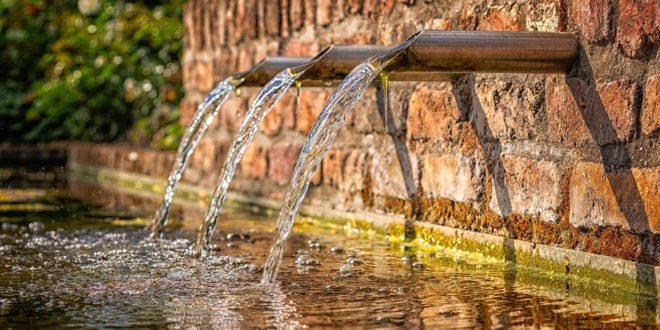Climate change is a topic that is on everyone’s mind these days, as temperatures rise and extreme weather systems threaten both coastal and inland cities. There is one thing that many people are overlooking when it comes to climate change. The fact is that if it’s allowed to continue, it could result in a global water shortage. How is climate change affecting drinkable water supplies?
Rising Temperatures
Whether the current presidential administration wants to admit it or not, the global temperature is rising. The U.S. Intergovernmental Panel on Climate Change has predicted that we will experience a rise in temperature from 0.3 to 4.8 degrees C (0.5 – 8.6 F) by the end of this century.
These changes won’t just affect the ambient air temperature. As temperatures start to climb, whole infrastructures from water to food to transportation will be affected. We’ve already seen some of the impacts of climate change. In 2016, a heat wave hit India that was so hot it melted the asphalt roads within the city of Phalodi, Rajasthan. In 2017, three monster hurricanes hit the United States — Harvey, Irma and Maria — causing billions of dollars in damage.
What we see now is just the beginning. What effect will these changes have on the global water supply?
Water Table Changes
Recent research has shown that rising temperatures are having a dramatic impact on the water cycle, from precipitation patterns to the concentration of water vapor in the clouds. This impact has manifested in some areas in the form of excessive rainfall, and others in the form of extreme droughts.
Many of these changes are directly linked to the rising global temperature. Warm air holds more water vapor than cold air which leads to heavy rainfall. This rainfall, in turn, leads to flooding in the affected areas which can cause more damage. In areas that experience drought, the higher temperatures will cause the soil to dry out as the little water that it retains is lost to evaporation.
Agricultural Impacts
The agricultural industry stands to suffer the most from these water cycle changes, especially those farms located in otherwise dry and arid climates. Arizona is mostly desert, but still produces millions of pounds of red meat, dairy products and fresh produce. Many of the crops produced on this arid landscape — from cattle to citrus — require massive amounts of water. Meat production is one of the most water-intensive industries in the world. It takes nearly 1,800 gallons of water to produce one pound of beef, and 576 gallons to produce one pound of pork.
As the water cycle continues to change in response to climate change, farmers in areas like Arizona will need to prepare for the inevitable water shortages that will impact their ability to grow crops and raise livestock.
Farms in arid climates already need to be as water-efficient as possible, due to the cost of piping or shipping water across the landscape to keep the crops and livestock watered. Utilizing drip irrigation, which is one of the most efficient forms of crop irrigation, can help to reduce the water used while still keeping the crops healthy.
Water Shortages
We’re already facing water shortages around the globe. In 2018, Cape Town, South Africa nearly ran out of water. The city’s planners were only able to prevent this consequence by limiting each home in the city to a maximum of 50 liters of water a day. For comparison, an average home in California uses more than 300 liters of water a day.
These shortages will continue to appear as the global temperature continues to rise. Water conservation will no longer be optional. It will become a necessity to ensure that we have enough potable water to drink in the coming years.

Green Jobs
How to Apply for a Green Job With the demand for green jobs skyrocketing so far in 2017, giving yourself a unique edge can be difficult—yet absolutely necessary—in order for you to become a proud worker for Mother Earth. Follow these steps to successfully claim your next environmentally friendly employment opportunity. 1. Resume: Make sure … Continue reading..



